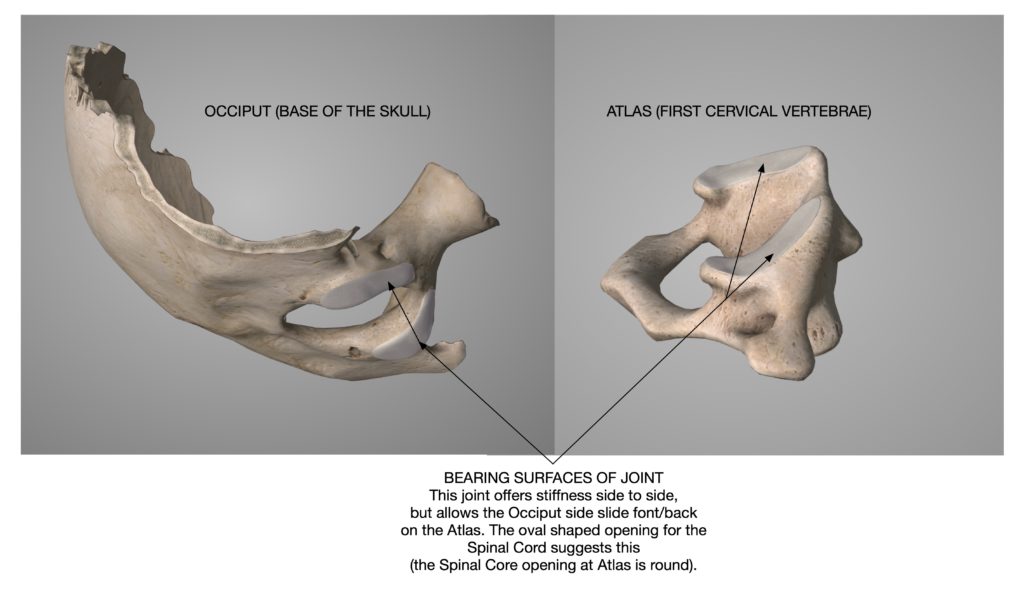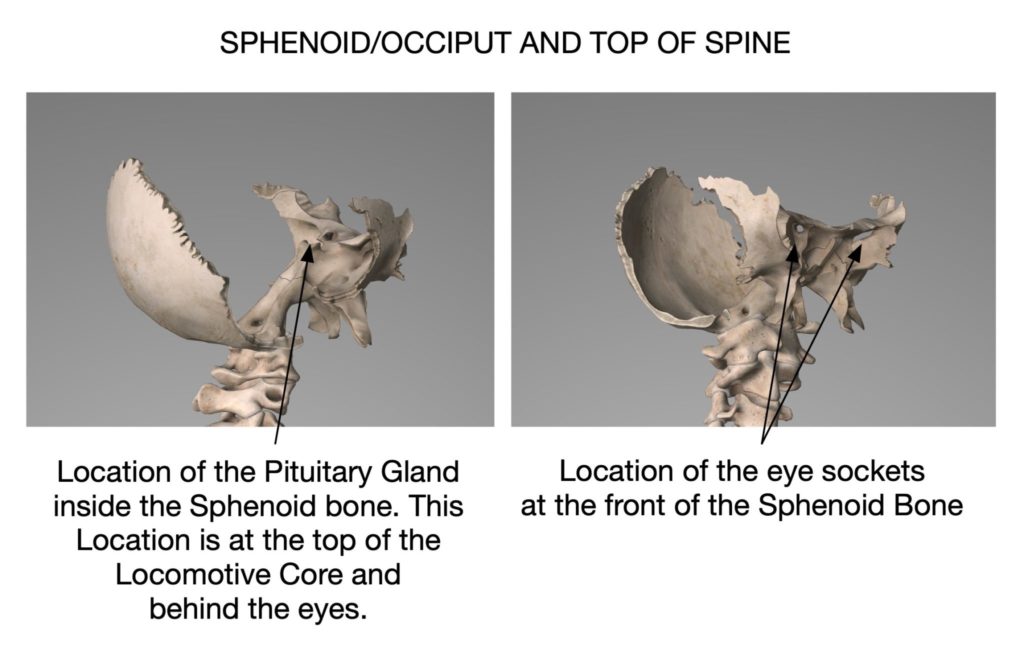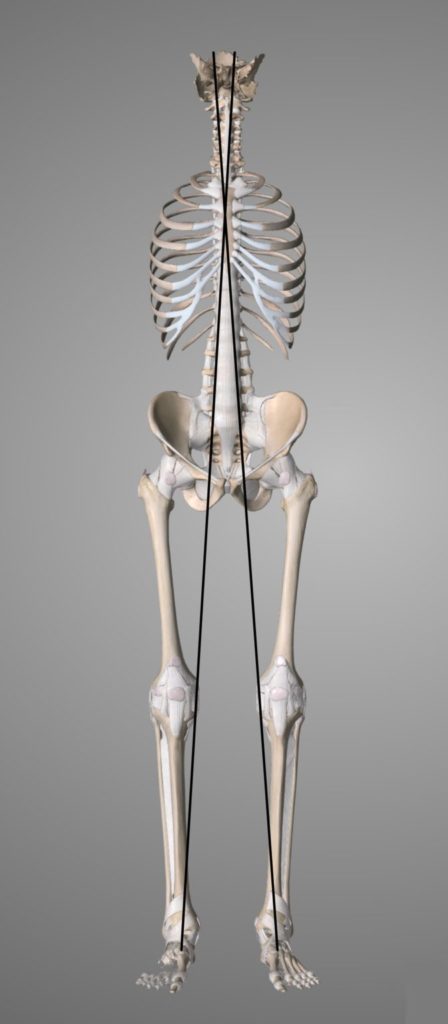Neck issues are endemic and prevalent in our “getting ahead” culture. It is very common to observe a “head forward” posture where the center of mass of the head is presented in front of its axes of rotation at the top of the cervical spine. Having the head forward in this manner requires that the musculature on the back of the neck, and down the back be held in tension to prevent the head from drooping. This chronic tension develops into a myriad of pathologies from tension headaches to vertebral disc degeneration.
Clarifying the function of these axes of rotation, and defining their rotational center, informs aligning head movement to the pivot ordained for this purpose.
Here three primary axes of rotation of the head over the body are discussed:
- Flexing the head as in nodding “Yes”.
- Rotating the head as in expressing “No”.
- Side bending of the head as when trying to touch the shoulder with the ear.
At least seven muscle groups are crucial for these fine movements. Inaccurate alignment of the axis of rotation within these movements leads to compensatory engagement of additional neck and back muscles, many of them involved in gross motor functions. Aligning head movement accurately to the appropriate mechanical pivot activates these innate fine motor systems, alongside their associated postural and gait reflexes. Embodying these geometries will, over time, dissolve localized connective tissue congestion and compensatory adhesions, increasing dynamic fluidity and responsiveness within this intricate mechanism.
FLEXION OF THE HEAD (Nodding “Yes”)
- We express this scope when we nod our heads as in the “Yes” movement.
- Occiput/Atlas is an interface allowing for flexion/extension of the head. It is a Condyle Joint as described here: Atlanto-Occipital Joint.
- This movement occurs between the skull’s base and the spine’s top.
- In flexion/extension, the movement originates directly below the ear, behind the bump below the ear lobe (Mastoid Process).

ROTATION OF THE HEAD (Nodding “No”)
- Atlas/Axis is an interface allowing for head rotation from side to side as in when we express the “No” movement.
- It is a Pivot Joint as described here: Atlano-Axial Joint.
- In rotation of the head, the rotating planes between C1 and C2 are about 1″ below the ears.
- It is common for this joint to be restricted and for the entire cervical spine complex to twist to perform this action.
SIDE BENDING
Side bending is not investigated here as the entire cervical spine is involved. It is therefore only indirectly related to the mechanisms elucidated in this post.
SPHENOID-OCCIPUT
The Sphenoid-Occiput is the structural connection between the top of the spine and the eyes/nose/jaw. It is commonly considered as the first vertebrae: C-0. Imagining the body prone, on all four limbs, as our quadruped antecedents stood, the Eyes-Nose/Sphenoid-Occipit complex would be the front of the body. Verticalizing this structure (getting up on our hind legs), this complex is the top, with the braincase posterior. In becoming bipedal, we rotated this complex anteriorly to face forward, with the braincase/cognitive attributes above/behind and the face/energy acquisition below/forward. The Sphenoid-Occiput bone is the front of the body, separating these two aspects, a structural support for our most primal senses and survival modes.
Pituitary Gland
The Pituitary Gland, nestled within the Sphenoid bone (Sella Turcica) behind the eyes, plays a crucial role as a neurological/biochemical interface. Due to its location inside the Sphenoid, it can be hypothesized that it possibly additionally senses mechanical strain/vibration within maneuvers. It is a key component of the Hypothalamic/Pituitary/Adrenal (HPA) Axis. This system is essential for the body’s dynamic response during movement, an ancient mechanism within the Sympathetic Nervous System for activating action, essential for the capacity for adaptation.
Optimally organizing the Sphenoid-occiput has a foundational role in maximally expressing our animal morphology potentials.

STRUCTURAL CORE
Extending the lines of action through the length of our structure results in the diagram at right. A side view of this line can be seen in this post:
HOW TO MOVE
There is a discussion of the Structural Core in this post:
GREATER STABILITY THROUGH INSTABILITY
(still in the edit)
The Structural Core is presented here because the front/top of this core is the Sphenoid-Occiput complex. The Kinsegrity kinematics of the Sphenoid-Occiput complex extend all of the way to the balls of the feet, where they push us forward. The expression of the associated kinematics in the feet is discussed in this post:
THE FOOT – FUNCTION FROM STRUCTURE

